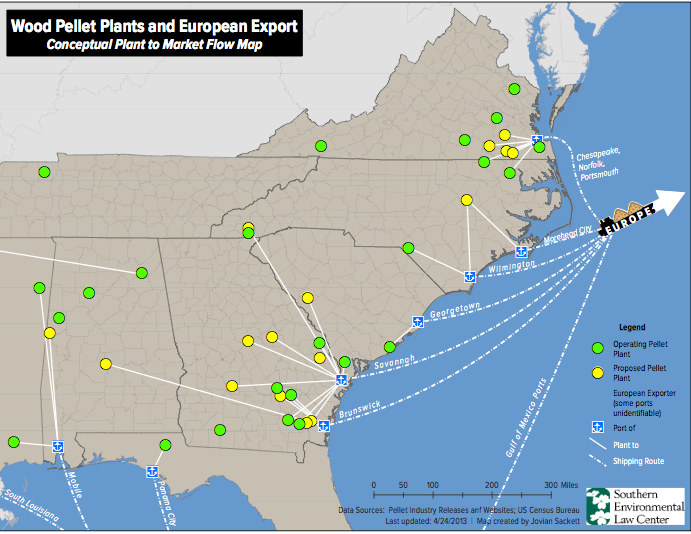
Image Credit: Southern Environmental Law Center
The Natural Resources Defense Council says that forests in the southeastern U.S. are threatened by a growing demand here and in Europe for wood to fuel the production of electricity, a practice that produces more carbon pollution than coal, gas and oil.
The “massive” fuel needs of electric utilities could double logging rates and “significantly” increase carbon emissions, the organization claims in a statement on its website.
“Until recently, electricity produced by burning plant material — called biomass energy — was widely considered an important ‘renewable’ resource — along with technologies like solar, wind, and geothermal,” the NRDC says. “But biomass was never meant to include whole trees, much less entire forests.”
The group said recent evidence discredits the use of whole trees to produce power because it increases carbon pollution while simultaneously destroying ecosystems “that can never be replaced.”
Demand ‘skyrockets’ in Europe
The United States was the largest exporter of wood pellets in the world in 2012 as demand for wood fuel increased sharply in Europe, the NDRC says.
As reported on a website for the North American Biomass Pellet Export Conference, wood pellets will help European countries meet their 20% renewable energy goals by 2020. Demand should hit 32 million tons by 2016 and rise to as much as 335 million tons a year by 2020.
“These manufacturers clear forests, grind the trees into wood chips and ‘wood pellets’ and ship them from ports in the Southeast to ports in Western Europe,” the group says. “Last year alone, wood pellet exports from Southern ports increased 70 percent.”
The group discounted claims by electric utilities and pellet manufacturers that burning wood to make electricity is essentially carbon neutral because the amount of carbon released when the wood is burned is the same as the carbon the trees have absorbed from the atmosphere as they grew.
Trees are about half water by weight, the NDRC says, so they have less energy potential than coal or other fossil fuels. “In other words, to get the same amount of energy from trees as from fossil fuels, many more trees have to be burned, resulting in 40 percent more carbon emissions at the smokestack per unit of energy generated.”
Weekly Newsletter
Get building science and energy efficiency advice, plus special offers, in your inbox.





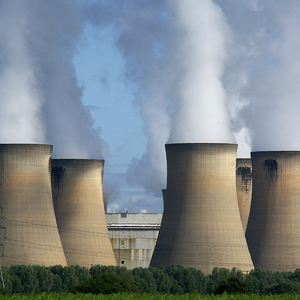
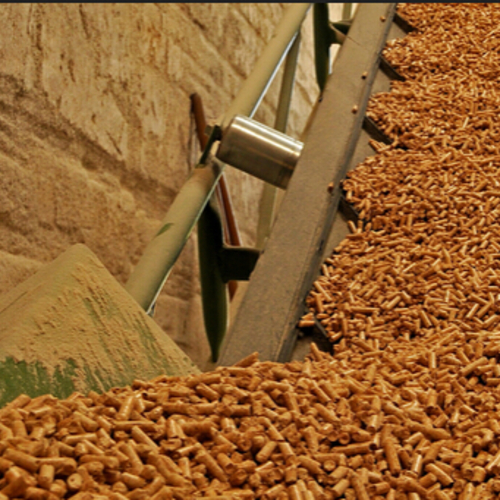
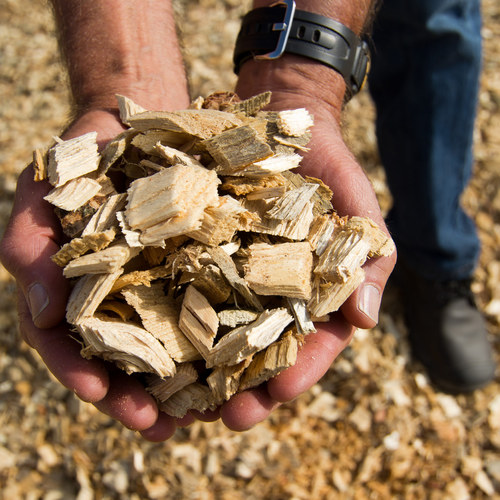
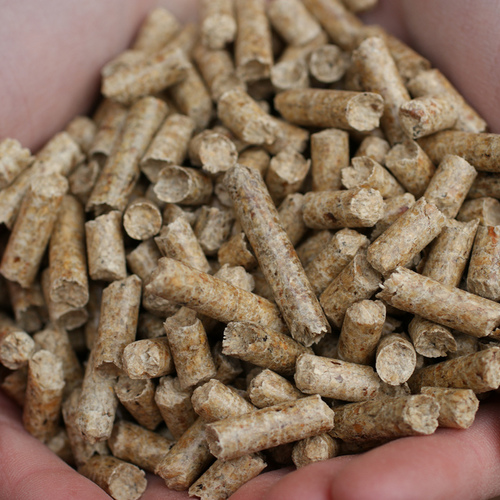






3 Comments
Net thermal efficiency (as well as forest mangement) matters.
The carbon accounting of biomass fuels is not simple. While the carbon emissions at the stack from biomass are higher per kwh than natural gas, it's carbon that has been "borrowed" from the biosphere cycle, with a payback period as the biosphere reabsorbs that carbon, rather than unlocking & releasing long-sequestered carbon into the biosphere (the fossil-fuel model.)
Doubling the logging rate isn't a-priori a net negative - it CAN be done sustainably if the forests are monitored and managed, the notion that it's all clear-cutting, laying waste to the landscape may be an unrealistically pessimistic view of what's actually going on in the southeastern US. I'm agnostic on that, and would want to see real data rather than assuming it's a worst-nightmare.
These issues came to a head a few years ago in Massachusetts, and the state paid for a more careful analysis to tease out the carbon accounting issues to determine what was and wasn't sustainable for biomass power in this region. The numbers will vary by region, but the carbon-accounting principles used work everywhere. The executive-summary version of the MA study lives here:
http://www.manomet.org/sites/manomet.org/files/Manomet_Biomass_Report_ExecutiveSummary.pdf
The longer version lives here:
http://www.mass.gov/eea/docs/doer/renewables/biomass/manomet-biomass-report-full-hirez.pdf
The 1-paragraph version is: Burned at ~25% thermal efficiency with poor forest management biomass power is an environmental disaster, with a heavy carbon footprint. But when used in combined heat & power applications thermal efficiency is maximized, and with reasonable forest management assumptions the net lifecycle effect of biomass power can be beneficial.
As a result of this study plans for four thermal powerplants in MA were scrapped, and the state now requires a minimum thermal efficiency of 50% to be counted at all for renewable energy credits as part of the states RPS carve-out, and 60% for full-credit. With the current state of the art of biomass power boiler technology those numbers can be hit only with combined heat & power (CHP) co-generation, but they CAN be hit.
That study hasn't been without it's challengers, and the counterarguments are also well worth considering:
http://www.renewableenergyworld.com/rea/news/article/2011/05/how-manomet-got-it-backwards-challenging-the-debt-then-dividend-axiom
Just an idea for a democratic
Just an idea for a democratic society: Stop subsidising energy consumption and there will be no exports.
Carbon Sequester
Wood industry claims of carbon neutral do not seem to take into account all the carbon based materials that are left to rot, or collected and allowed to rot as pine straw or other mulch. All the pine needles, pine cones and pollen (I lived in Georgia fro a while) decompose. Over the life of a tree (10 to 15 years), before it is cut down, this must a significant contribution. Then after the tree is cut, what about the decaying trunk and root system. Even if the portion of the tree that is used for lumber is "carbon neutral" because it has short term sequestered carbon,, why aren't all these other aspects considered. Same concerns would apply for hardwood with nuts, flowers, and leaves. does anyone know of a study addressing these aspects?
Log in or create an account to post a comment.
Sign up Log in